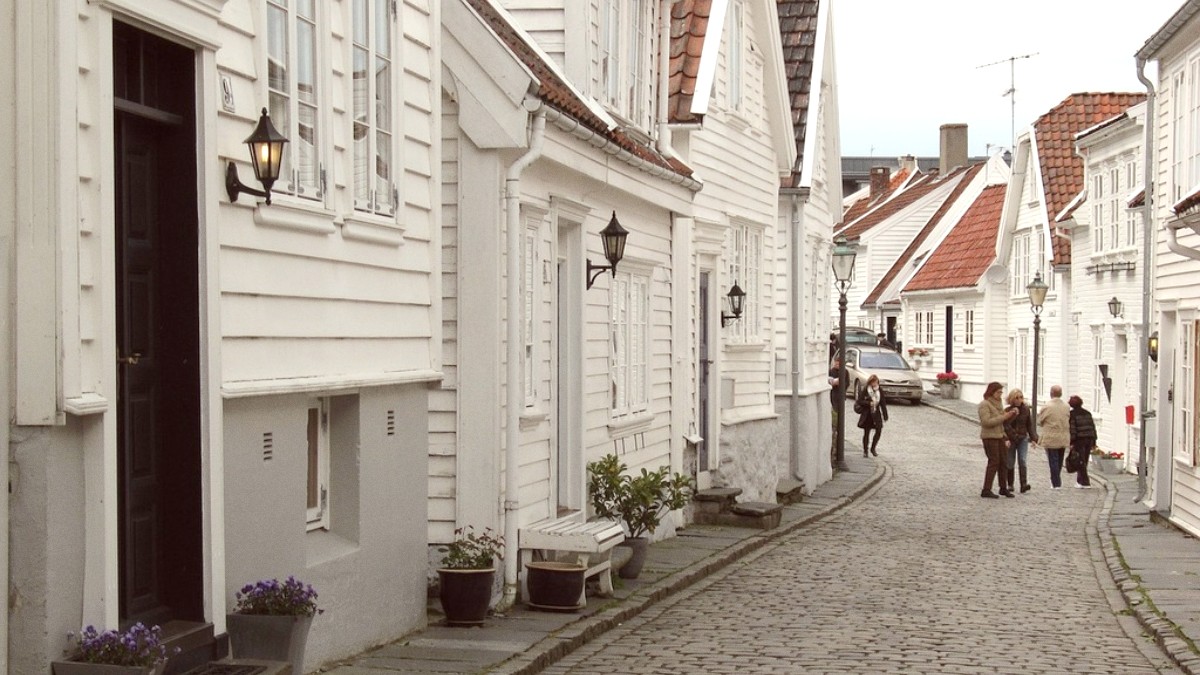
Bergen And The Western Fjords, Norway
Visitors find a place where history meets modern life, set against a backdrop of impressive natural beauty. From cobbled streets and white wooden houses to deep fjords and towering cliffs, Stavanger presents an unique blend of experiences.
Stavanger welcomes visitors with a blend of rugged coastal beauty, deep historical roots, and a modern, forward-thinking spirit. This Norwegian city, located on the country's southwestern coast, acts as a gateway to some of the world's most dramatic natural wonders. Travelers find a destination offering both serene landscapes and dynamic urban life.
Imagine waking to the crisp, clean air, with the scent of the sea carried on a gentle breeze. You can explore charming historic districts in the morning and then set out for an afternoon hike to an iconic cliff edge overlooking a vast fjord. The city presents chances for quiet reflection in nature or energetic evenings enjoying local cuisine. A trip combines the comforts of city life with the grandeur of nature, creating memories that last a lifetime.
Stavanger sits on Norway's southwest coast within Rogaland county. Its location on a peninsula shapes the city's layout and its close connection to the sea. The city's topography features a mix of urban areas, green spaces, and a direct link to the surrounding marine and mountain landscapes. This geographical setting means visitors are never far from nature. The area's defining natural feature is the dramatic Lysefjord, drawing visitors from around the world. Its steep, sheer cliffs rise directly from the water. Beyond the fjords, the landscape includes rolling hills, flat coastal plains (Jæren), and rugged mountain ranges. This varied terrain offers different experiences. The presence of numerous islands means ferry travel is a common way to explore the immediate surroundings, adding another layer to the local experience.
Stavanger's history reaches back to the Viking Age. Tradition links its establishment to the Battle of Hafrsfjord in 872 AD, which unified Norway under King Harald Fairhair. The city gained further importance in the 12th century, becoming a bishopric with the construction of Stavanger Cathedral. For centuries, the economy relied on fishing and shipping. In the late 19th and early 20th centuries, Stavanger experienced an industrial boom, becoming a major center for canning, especially sardines. A profound transformation began in the 1970s with the discovery of significant offshore oil and gas reserves. Stavanger quickly became Norway's "Oil Capital," attracting international companies and professionals. This shift brought wealth, a cosmopolitan atmosphere, and rapid modernization to the city. Each era has left its mark, creating a city rich in layers of heritage.
Norway's unification.
Became a bishopric, Stavanger Cathedral built.
Canning industry boom.
Discovery of North Sea oil.
Leading energy capital.
Stavanger, with a population around 146,000 within its municipality, functions as a city large enough for diverse services and cultural opportunities, yet compact enough to feel welcoming. Its main industry is oil and gas, which serves as its main economic engine, driving significant growth and modernization. The city feels modern and prosperous.
Explore Gamle Stavanger, Europe's best-preserved wooden house settlement, with charming white houses and cobbled streets. Visit Stavanger Cathedral, a significant 12th-century landmark. The Norwegian Petroleum Museum offers an interactive look into the industry that shaped modern Stavanger.
Just outside the city, the monumental sculpture Swords in Rock (Sverd i fjell) commemorates the Battle of Hafrsfjord. The city's geography provides access to world-renowned natural landmarks like Preikestolen (Pulpit Rock) and Kjeragbolten in Lysefjord, offering challenging hikes and spectacular fjord views.
Stavanger's journey from Viking settlement to medieval religious center, then to fishing and canning hub, and finally to a global energy capital, mirrors Norway's broader historical narrative. Each era has left its mark.
Stavanger, with a population around 146,000, functions as Norway's "Oil Capital." This city blends urban comfort with natural grandeur.
attractions include historic districts, medieval cathedrals, and interactive museums, complemented by easy access to world-famous fjords and mountain trails.
Approx. 146,000 residents.
Leading oil and gas hub.
Gamle Stavanger, Preikestolen.
The city's nickname, "Oil Capital of Norway," accurately reflects its economic identity, driving growth and modernization.
This blend creates a destination with something for every traveler, from historical charm to modern industry and stunning nature.